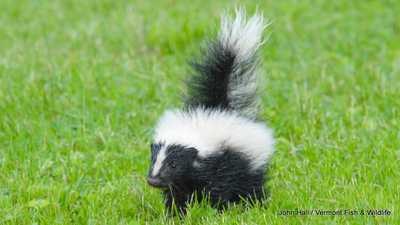[ad_1]
 |
| Picking up young wildlife can do more damage than superior, according to the Vermont Fish and Wildlife Office. It can be also in opposition to the legislation. |

MONTPELIER, Vt. — Seeing wildlife is pleasing, primarily when young animals show up in the spring. But it is most effective to maintain your distance. Buying up younger wildlife can do far more damage than fantastic, according to the Vermont Fish and Wildlife Office, and it is also from the regulation.




When folks see youthful animals by yourself, they usually mistakenly assume these animals are helpless or lost, in trouble or needing to be rescued. Bringing young wildlife into a human ecosystem normally final results in permanent separation from their mothers and a unfortunate ending for the animal.




Managing wildlife could also pose a danger to the individuals involved. Wild animals can transmit disorder and indignant wildlife mothers can pose major hazards.




Department scientists inspire wildlife watchers to regard the conduct of animals in the spring and early summer, and to resist the urge to guide wildlife in techniques that may well be destructive.




Listed here are some practical strategies:




• Deer and moose nurse their young at diverse times for the duration of the working day, and frequently depart young by yourself for lengthy periods of time. These animals are not shed. Their mother understands wherever they are and will return.




• Youthful birds on the floor could have left their nest, but their mothers and fathers will nonetheless feed them.




• Younger animals these as fox and raccoon will often stick to their mom. The mom of a wildlife youngster is generally close by but just out of sight to a human being taking place on it.




• Animals that act unwell can have rabies, parasites or other destructive conditions. Do not tackle them. Even though they do not display indicators, nutritious-looking raccoons, foxes, skunks, and bats may possibly also be carriers of the fatal rabies virus.




• Lots of wildlife species will not feed or treatment for their young when individuals are shut by. Obey signals that restrict accessibility to wildlife nesting locations, including mountaineering trails that may well be quickly shut.




• Continue to keep domestic pets indoors, leashed or fenced in. Canine and cats get rid of many baby animals each individual 12 months.




• Stay clear of assignments that clear away trees, shrubs and dead snags that include nests all through the spring and summer time.




For info about rabies and wildlife conflicts, or really orphaned wildlife, contact the Vermont Rabies Hotline at 1-800-4RABIES (1-800-472-2437).




For the safety of all wildlife, using a wild animal into captivity is unlawful, even just one you suspect is sick, wounded or has been deserted.




Delivered by the Vermont of Fish & Wildlife Department.

[ad_2]
Resource website link






More Stories
Markup – Pricing Your Services When Customers Want to Pay Less Than You Do!
From Hobby to Self Employed in the Handcrafted Jewelry Business
Pros and Cons of Targeting Federal Government For Funding of Technology Grants Non Profit